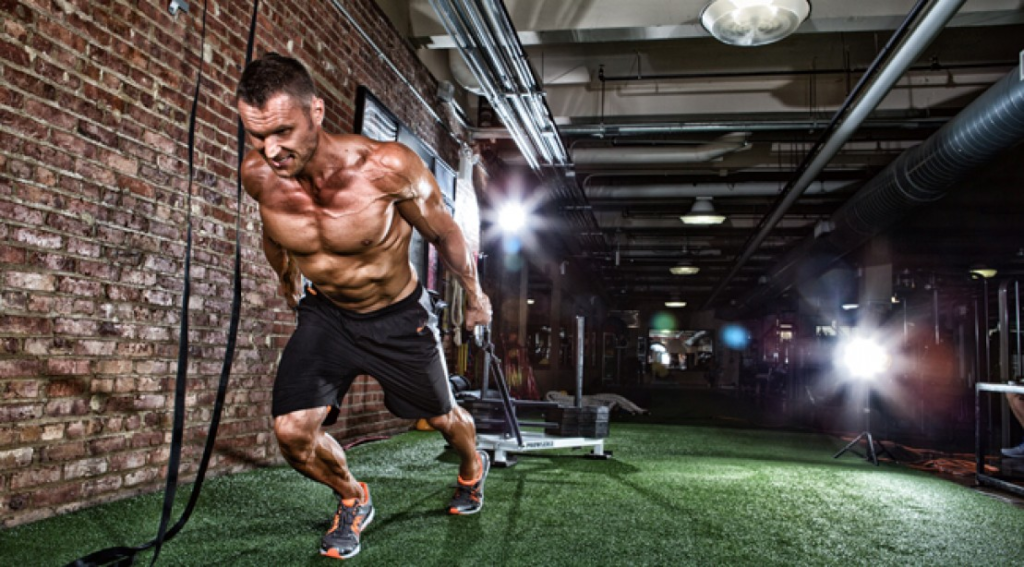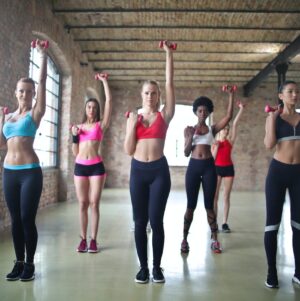Hey, everybody. Today we are going to talk about cardio as a tool to correct our figure, about which there are a lot of myths and prejudices, especially among beginners. And today I want to tell you why you really need to do cardio and how to use it correctly on gaining muscle mass or losing weight. After all, a person, the first thing he probably does when he suddenly decides to get rid of his belly is to go on a diet and start running or jumping, and in the gym he goes exclusively on the treadmill for 20 minutes twice a week.
And if you are on mass and trying to gain muscle mass, it seems that we should sit on a calorie surplus, but no one wants to “eat up” to the state of a hippopotamus, even with some muscles (one two kilograms, and that at the initial stage). And then we decide that cardio can also help us in this, that we will run and thus remove this excess fat, that there is something burning in some heart rate zone and so on. Nothing burns there, cardio is just a tool to increase the energy consumption of our body per day. And fat burns afterwards, when we spend more than we consume.

To gain dry muscle mass.
And therein lies the crux of the problem. To gain dry muscle mass (if it is possible, but let’s call it in theory), it is a rather complicated process and it consists in a slight calorie surplus, a kind of hypercompensation, a reserve for the future. To put it simply, it works like this:
– there is a certain level of calories that you, as it is, spend per day with normal daily activity.
– At the same time, if we go to the gym and decide to work out our legs properly, the next couple of days (a week in fact) will be a process of muscle recovery, hormonal system and so on. Including glycogen in the muscles, which we still need even before training in a small reserve, but let’s not complicate it.
– And it is for this “future” moment of recovery that we need this calorie surplus, say, 200-300 kcal per day, which will give muscle growth and recovery of other hormonal systems.

– Everything that does not go to this hypercompensation after training will go to our fat. I’m simplifying it a little bit, just to be clear, that’s not what’s important. And cardio training for the most part will just “kill” all that hypercompensation. We put on those extra calories for what? For growth? So why waste it on cardio. Yes, you could say that then I’ll eat weight in a row, not keeping calories, and just run. But in practice it is very difficult to calculate this small calorie surplus, and that’s why we always gain weight. So even with the extra expenditure of these calories you will generally come to a standstill. And you will eat more, because hunger will not go away.
– And it turns out, why spend more, if we will eat it later anyway, and there is a high probability that we will not gain muscles. And if you lack psychologically (to get full), say 3000 kcal per day to gain lean muscle mass, then eating 3500 and running to spend on these 500 kcal, you will still lack these 3500… Well, this is how our body works. Yes, you may eat an extra piece of cake, but the other negative factors still, in my opinion, greatly outweigh. And you will not lose weight if you have already gained a small part of fat, because the body burns fat only on the deficit, which you do not have on mass gain.
That's it, no need to reinvent the wheel.
And it turns out that cardio is better not to use on mass gain, if you gain muscle mass, then work on it, just try to keep calories, and in practice, eat less fat and flour, and more protein and slow carbohydrates. That’s it, no need to reinvent the wheel.
And here on the drying cardio is our assistant, but again, cardio itself does not burn anything, and fat on your flanks does not sink. It only creates additional calorie consumption, without affecting our muscles (well, maybe only in the beginning). And it is convenient to perform it on free days from training in the gym. And someone even combines them, cardio in the morning and gym in the evening. And with a deficit of calories, even a small one, in the diet, and plus all this expense in the gym and on the treadmill will create an excellent incentive to reduce your weight.
And the second point is health. Cardio can also be used to increase your endurance, strengthen your heart, your respiratory system, and all that sort of stuff. But really, just to stay healthy you just need to walk, move, do 10,000+ steps a day minimum. And then you’re not wasting what you already have.
It’s like keeping your hand in front of you, you keep your health at that certain level. If you don’t move much and sit in an office chair all the time, and lie on the couch in the evening, your arm gradually drops and you “lose” your health (well roughly speaking). If you start speeding up, and not just walking, but running, jumping, and so on, you raise that arm higher, strengthening and stimulating your health, plus working out your endurance. But a lot of people don’t care as much about that, because you have to keep it at that level all the time, otherwise when you decrease the load, the arm will start to go down again. That’s why on support just walk and walk a lot, on drying accelerate and run, and on mass you can also lie down, but only after you have worked with a barbell for a couple of hours in the gym.


